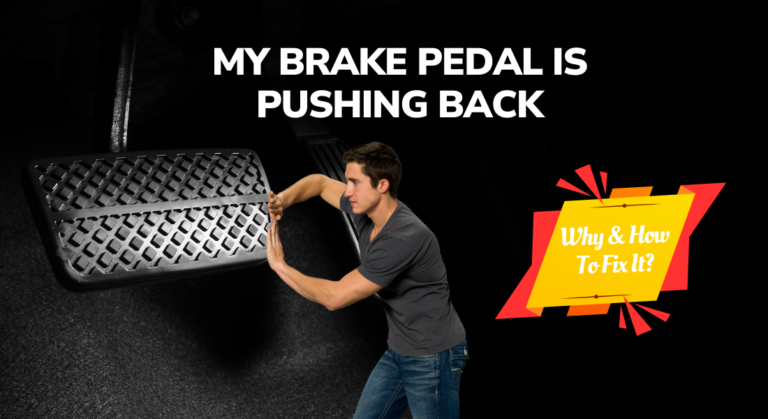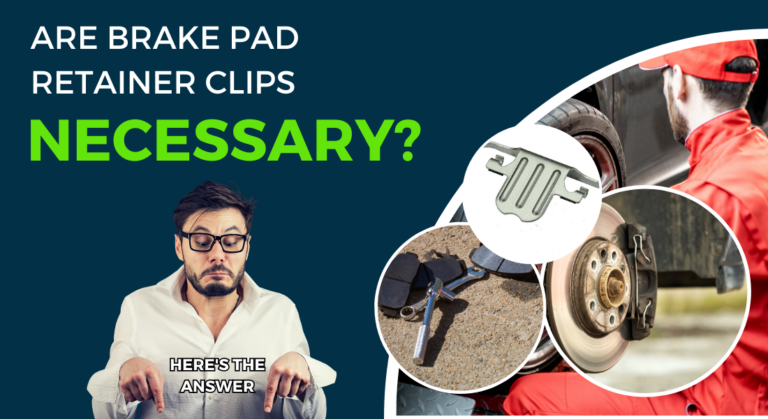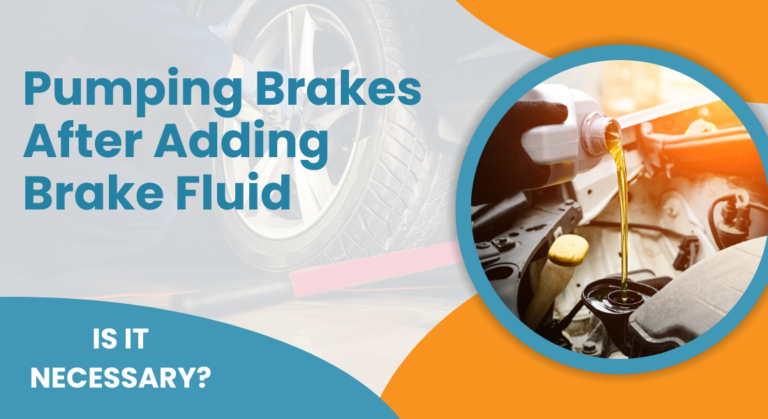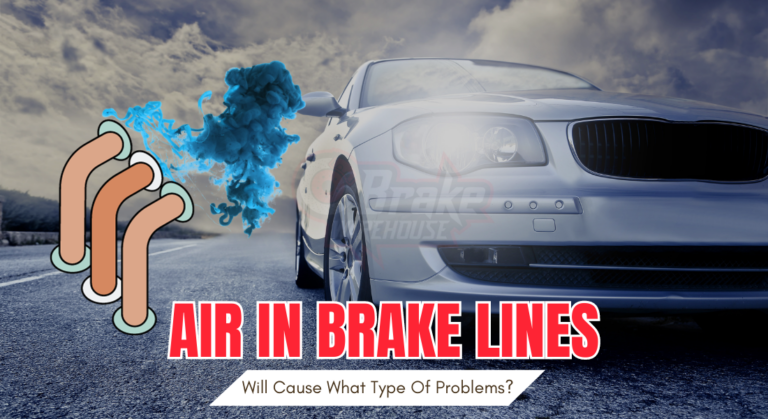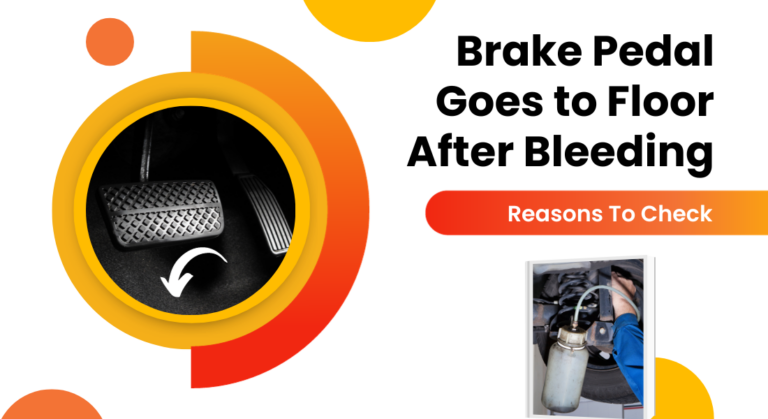How Long Will 3mm Brake Pads Last? (The Ideal Thickness)
Brake pads are responsible for generating friction against the brake rotors, enabling your car to decelerate or come to a complete stop.
It’s critical for you to understand the service life of these brake pads as a car owner, especially when they reach a thickness of 3 mm. Read on to learn how long a 3 mm brake pad typically lasts and the factors affecting its durability.
Additionally, you will understand the ideal thickness of brake pads and a step-by-step guide on checking brake pad thickness. I will also give maintenance tips to prolong the lifespan of your brake pads.
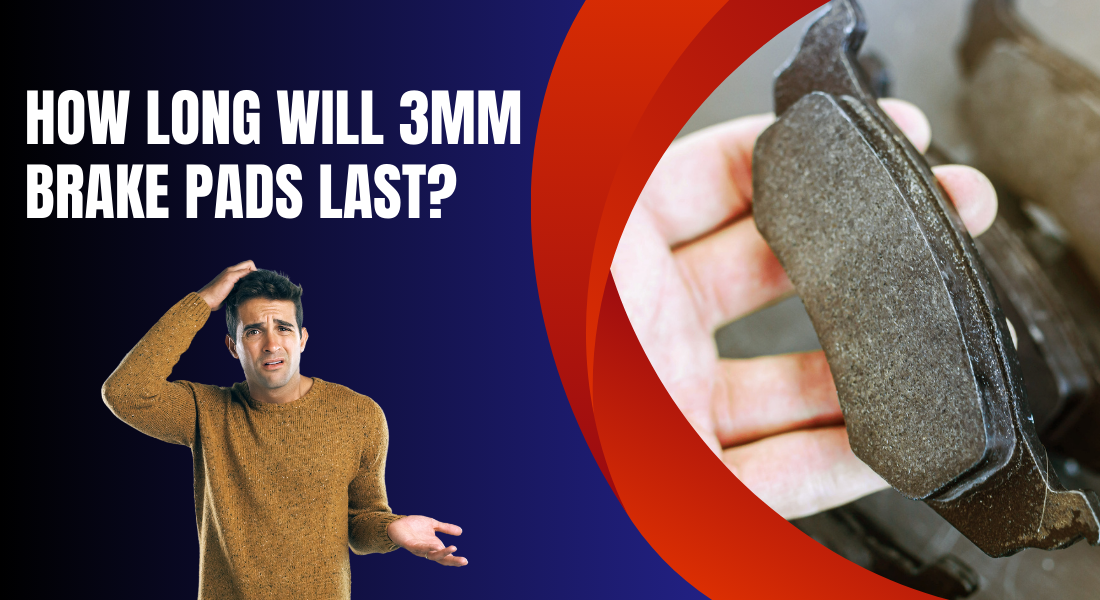
What Is The Normal Thickness Of A Brake Pad?
Brake pads start with a thickness of around 12 mm when they are new. However, this thickness reduces as you use your brakes over time. Here is a table to demonstrate the thickness lifespan of a brake pad.
| Light Wear | Moderate Wear | Service Soon | |||||
| 11mm | 10mm | 8mm | 6mm | 5mm | 4mm | 3mm | 2mm |
To determine the thickness of your brake pad, follow the following steps:
Step 1: Locate the brake caliper

The brake caliper is usually visible behind the wheel and is responsible for housing the brake pads.
Step 2: Remove the wheel

Safely jack up the vehicle and remove the wheel to access the brake caliper.
Step 3: Inspect the brake pad

Visually inspect the brake pad, looking for the pad’s thickness. Most brake pads have indicators that show the minimum thickness allowed. If the thickness is approaching the minimum threshold or is already below it, it’s time to consider replacing the brake pads.
Step 4: Measure the brake pad thickness
Using a brake pad thickness gauge or a precise ruler, measure the brake pad’s thickness. Ensure you measure the pad’s metal backing plate, not just the friction material.
Here is a video to help you understand this process better.
How Long Will 3 mm Brake Pads Last?
On average, a brake pad that is 3mm in thickness can last about a week of heavy use. If you are a more careful driver, you could still use it for about three weeks to a month.
However, it’s important to note that this longevity may vary depending on various factors. These factors include the following.
Driving Habits and Mileage
If you are a careful driver, practicing gradual braking and anticipatory maneuvers might stretch the pad’s lifespan to a span of several weeks.
Contrastingly, if you have aggressive driving styles characterized by abrupt stops and rapid accelerations, you could drastically reduce the lifespan to just a few days. Essentially, the mileage you can extract from a 3 mm brake pad rests firmly on the pedestal of your driving demeanor.
Material Quality and Brake Pad Type
The material used plays a pivotal role. High-quality brake pads, often enriched with ceramic or other advanced compounds, have remarkable endurance, outshining their counterparts in how long they last.
On the other side of the spectrum, performance-oriented brake pads, engineered to deliver aggressive stopping power, might sacrifice longevity for heightened braking effectiveness. Thus, the material you have significantly influences the timeline of your 3 mm brake pad’s lifespan.
Number Of Miles On The Current Pad
The number of miles driven on the current brake pad directly impacts its remaining lifespan. If the brake pads have already covered a substantial distance, even a 3 mm thickness may indicate that replacement is imminent.
Read Also: How Long Can You Drive Without Brake Pads? – Is It Safe
How To Maintain Your Brake Pad If It Is At 3 mm?
While a 3 mm brake pad indicates significant wear, there are steps you can take to prolong its lifespan. These steps will also ensure optimal performance until it can be replaced:
1. Flush The Brake Lines

Regularly flushing the brake lines helps remove any contaminants or air bubbles that can affect brake performance and pad wear. Flushing the brake lines also ensures that the brake fluid is clean and free from moisture, which can contribute to brake pad degradation.
2. Adjust Your Driving Style
Adopting a smoother driving style can greatly reduce wear on the brake pads. Gradually apply the brakes instead of harshly stomping on them, especially when coming to a stop.
Anticipate traffic situations and maintain a safe distance from the vehicle ahead, allowing for gradual stops instead of sudden braking.
3. Avoid Overloading Your Vehicle
Excessive weight in your vehicle can strain the braking system, causing the pads to wear out faster. Avoid overloading your vehicle beyond its recommended weight capacity.
4. Consider Changing Brake Linings

Upgrading to high-quality brake lines, such as stainless steel braided lines (Our Pick: ), can improve brake pedal feel and reduce flex. This will result in more consistent and controlled braking. These lines can contribute to better brake pad wear and longevity.
5. Inspect For Warped Rotors And Calipers
Regularly inspect your brake rotors and calipers for signs of warping or sticking. Warped rotors can cause uneven pad wear, while sticking calipers can prevent the pads from retracting fully, leading to accelerated wear.
Read Also: Brake Pad Rubbing On Rotor While Driving – How To Fix?
6. Minimize Braking When Going Downhill
When descending steep hills, it’s advisable to utilize engine braking by downshifting instead of relying solely on the brakes. This technique reduces the strain on the brake pads, minimizing wear.
7. Maintain A Safe Distance
Maintaining an adequate distance from the vehicle ahead allows smoother, gradual braking instead of sudden stops. This reduces the strain on the brake pads and promotes their longevity.
Read Also: What Happens If My Brake Pad Falls Off? – The Consequences
FAQs
Here are some additional related questions that you might be interested in.
What are the symptoms of a worn brake pad?
Several signs indicate that the brake pads may be worn and need replacement. These symptoms include squeaking or squealing noises when braking, reduced braking responsiveness, and a pulsating brake pedal. Other symptoms include longer braking distances and visible signs of thinning brake pad material.
How much does a brake pad replacement cost?
A brake pad replacement can cost anywhere between $115 and $300 per axle. The cost of a brake pad replacement can vary depending on the vehicle make and model, the type of brake pads used, and your area’s labor rates.
Conclusion
Understanding how long 3mm brake pads will last is crucial for maintaining the safety and performance of your vehicle’s braking system. Your 3 mm brake pads will, on average, last about a week if you have a high-performance car. If you are a more careful driver, you could still use them for close to a month.
By practicing good driving habits and following proper maintenance procedures, you can extend the lifespan of your 3mm brake pads. Regularly checking the brake pad thickness and promptly replacing worn-out pads are crucial for maintaining a safe and efficient braking system.

Meet Zayan, the mechanical genius behind the highly acclaimed brakes problems and solutions website. With over a decade of hands-on experience in the automotive industry, Zayan has become a trusted authority in the realm of brake systems.
His passion for cars, coupled with his expertise in solving complex brake-related issues, has earned him a devoted following of car enthusiasts, mechanics, and everyday drivers seeking reliable guidance.

